Why Are Microscopes So Expensive ?
Microscopes can be expensive due to several factors. Firstly, the technology and materials used in manufacturing high-quality microscopes can be costly. Microscopes require precision optics, such as lenses and mirrors, which need to be finely crafted to achieve high magnification and resolution. Additionally, the mechanical components of microscopes, such as the stage and focusing mechanisms, need to be precise and durable, adding to the overall cost.
Furthermore, research-grade microscopes often incorporate advanced features and technologies, such as fluorescence imaging or confocal microscopy, which further increase their price. These specialized functionalities require additional components and sophisticated engineering, contributing to the overall expense.
Moreover, the demand for microscopes is relatively low compared to other consumer products, resulting in economies of scale that are not as favorable. The limited market size for microscopes means that manufacturers cannot benefit from mass production, leading to higher per-unit costs.
Lastly, the cost of research and development for new microscope technologies and innovations is also a factor. Companies invest significant resources in developing cutting-edge microscopy techniques, which are reflected in the final product's price.
1、 Advanced Optics and Lens Technology
Microscopes are expensive primarily due to the advanced optics and lens technology they incorporate. The quality and precision of the lenses used in microscopes greatly impact their performance and ability to magnify objects with clarity. These lenses are typically made from high-quality glass or specialized materials, which require intricate manufacturing processes and strict quality control measures. The cost of producing such lenses is significant, contributing to the overall expense of microscopes.
Furthermore, the design and construction of microscopes involve intricate engineering and precise alignment of various components. The mechanical parts, such as the stage, focus mechanism, and illumination system, need to be manufactured to high tolerances to ensure smooth operation and accurate results. This requires skilled labor and specialized equipment, adding to the cost of production.
In recent years, advancements in technology have further increased the cost of microscopes. For instance, the development of advanced imaging techniques, such as confocal microscopy and super-resolution microscopy, has led to the integration of complex electronics and sophisticated software into microscope systems. These additional features enhance the capabilities of microscopes but also contribute to their higher price tags.
Moreover, the demand for high-quality microscopes is relatively niche, primarily driven by scientific research, medical diagnostics, and industrial applications. The limited market size for these specialized instruments means that manufacturers have to recover their research and development costs, as well as cover the expenses associated with low-volume production.
However, it is worth noting that with advancements in technology and economies of scale, the cost of microscopes has been gradually decreasing over time. Additionally, there are now more affordable options available for educational purposes or basic laboratory use. Nonetheless, for cutting-edge research and advanced applications, microscopes with the latest optics and technology continue to command a higher price due to the complexity and precision involved in their production.
2、 Precision Engineering and Manufacturing Processes
Microscopes are expensive primarily due to the precision engineering and manufacturing processes involved in their production. The intricate design and high-quality materials required to achieve the necessary magnification and resolution contribute to the overall cost.
Precision engineering is crucial in microscope manufacturing as even the slightest deviation can significantly impact the performance of the instrument. The lenses, mirrors, and other optical components must be precisely aligned and manufactured to ensure accurate imaging. This level of precision requires advanced machinery and skilled technicians, which adds to the cost.
Moreover, the manufacturing processes involved in microscope production are complex and time-consuming. The lenses, for example, are made using specialized techniques such as grinding, polishing, and coating to achieve the desired optical properties. These processes require skilled labor and expensive equipment, further driving up the cost.
Additionally, the latest advancements in microscopy technology have led to the development of more sophisticated and specialized microscopes. For instance, electron microscopes and confocal microscopes utilize cutting-edge technologies that enable higher resolution and imaging capabilities. The research and development costs associated with these advancements are reflected in the final price of the microscopes.
Furthermore, the demand for high-quality microscopes in various fields such as biology, medicine, and materials science is consistently growing. This demand, coupled with the limited number of manufacturers specializing in microscope production, creates a competitive market where prices tend to remain high.
In conclusion, the high cost of microscopes can be attributed to the precision engineering and manufacturing processes involved, as well as the continuous advancements in technology. While the expense may seem prohibitive, it is important to recognize that these instruments play a crucial role in scientific research and discovery, making the investment worthwhile for many professionals and institutions.
3、 High-Quality Materials and Components
Microscopes are expensive primarily due to the use of high-quality materials and components. The construction of a microscope requires precision engineering and the use of specialized materials that can withstand the demands of high magnification and resolution. These materials are often expensive to source and manufacture, contributing to the overall cost of the microscope.
One of the key components of a microscope is the lens system. Microscopes require high-quality lenses that can accurately focus and magnify the specimen being observed. These lenses are typically made from specialized glass materials that have excellent optical properties. The manufacturing process for these lenses involves grinding and polishing to achieve the required precision, which adds to the cost.
Additionally, microscopes often incorporate advanced technologies such as fluorescence imaging, confocal microscopy, or electron microscopy. These technologies require sophisticated components like lasers, detectors, and electron beam generators, which are expensive to develop and produce. The integration of these technologies into a microscope further increases its cost.
Moreover, research and development play a significant role in the high cost of microscopes. Manufacturers invest heavily in developing new technologies and improving existing ones to enhance the performance and capabilities of microscopes. This ongoing research and development effort adds to the overall cost of the microscope.
It is worth noting that while microscopes have traditionally been expensive, recent advancements in technology have led to the development of more affordable options. For example, digital microscopes that utilize cameras and computer software have become increasingly popular and accessible. These digital microscopes offer comparable magnification and resolution to traditional microscopes at a fraction of the cost. However, high-end research-grade microscopes with cutting-edge capabilities and precision will continue to be expensive due to the specialized materials and components required.
In conclusion, the high cost of microscopes can be attributed to the use of high-quality materials and components, the incorporation of advanced technologies, and the investment in research and development. While advancements in technology have made microscopes more affordable, top-of-the-line microscopes will continue to be expensive due to their specialized nature.
4、 Research and Development Costs
Microscopes are often considered expensive due to several factors, with one of the primary reasons being the high costs associated with research and development (R&D). The development of advanced microscopy technologies requires significant investment in terms of time, resources, and expertise. Researchers and engineers spend countless hours designing, testing, and refining microscope systems to ensure optimal performance and functionality. This extensive R&D process involves the exploration of new materials, optics, imaging techniques, and software algorithms, all of which contribute to the overall cost of the microscope.
Moreover, the continuous advancements in microscopy technology necessitate ongoing R&D efforts. As scientists discover new ways to observe and analyze samples at higher resolutions and with greater precision, microscope manufacturers must invest in further research to incorporate these innovations into their products. This constant pursuit of improvement drives up the cost of microscopes as manufacturers strive to stay at the forefront of scientific discovery.
Additionally, the materials used in microscopes can be expensive. High-quality lenses, specialized coatings, and precision-engineered components are required to achieve the desired imaging capabilities. These materials often come with a hefty price tag, further contributing to the overall cost of the microscope.
It is worth noting that while microscopes may seem expensive, they are essential tools for various scientific disciplines, including biology, medicine, materials science, and nanotechnology. The insights gained from microscopic observations have led to numerous breakthroughs and advancements in these fields. Therefore, the cost of microscopes can be seen as an investment in scientific progress and innovation.
In recent years, there have been efforts to develop more affordable microscopy solutions, particularly in the field of open-source hardware. Open-source microscopes aim to provide accessible and cost-effective alternatives by sharing designs, instructions, and software freely. These initiatives have the potential to democratize microscopy and make it more accessible to a wider range of researchers and students, potentially reducing the overall cost of microscopes in the future.





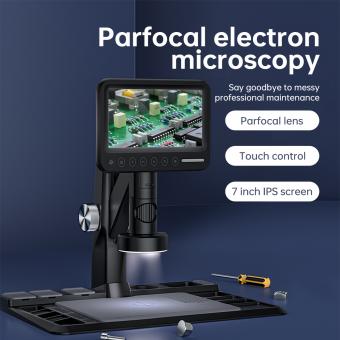







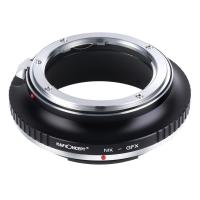
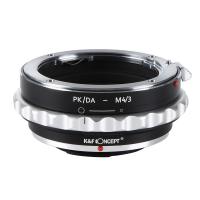










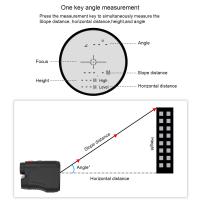



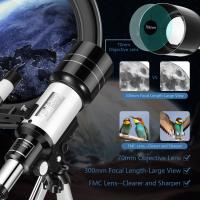
There are no comments for this blog.